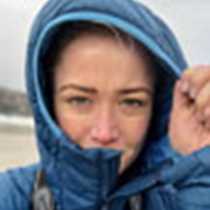On 14th April 1916 Sir Ernest Shackleton and his crew of 27 men landed at Cape Valentine on Elephant Island. Having watched their ship, the Endurance, crushed and consumed by the ice in the midst of the Weddell Sea on October 27th 1915, the men spent the next three months drifting among ice floes and being battered by the harsh elements of the Southern Ocean in their small lifeboats. Arriving at Cape Valentine was not the end of the survival mission for these hardy men, but it was certainly a momentous achievement.
Today was our opportunity to follow in the footsteps of Shackleton’s journey, albeit in much more comfortable circumstances. In a very rare opportunity we set foot on Cape Valentine, using the exact same landing channel and landing beach that Shackleton and his men had done nearly 100 years ago. Stepping across the slippery rocks below the harsh cliffs and ice slopes it was a moment to remember and a moment for reflection. Shackleton and his men only stayed here for a matter of days before scouting for a more suitable and sheltered landing site. We only spent a matter of hours on shore and it was almost unfathomable to understand just how much these 28 men must have endured. Today the conditions were kind, the wildlife was numerous, and our luck was up. However, the majority of us were still ready to return to our comfortable surroundings on board National Geographic Orion as the cold had seeped into our finger tips and our stomachs started rumbling.
Considering some of the staff had never made a landing on Elephant Island in over a dozen attempts, it is almost unbelievable that we managed to step on shore at Cape Valentine. What’s more, our afternoon plans for a Zodiac cruise around Point Wild were looking hopeful. A weather window such as this is a rare occurrence at Elephant Island.
Point Wild is the location Frank Wild scouted out for the men when Shackleton decided Cape Valentine was not going to serve them well. To us the overcast skies and biting air made Point Wild seem just as uninviting as Cape Valentine, but for a prolonged stay the men deemed this somewhat more sheltered location was better suited. Again we marvelled at how Shackleton’s men managed to survive on this desolate promontory for over four months. Cruising along the shoreline the air was damp and our layers of thermals and our big Parkas were serving us well. The idea of having to survive in wet woollen underwear for months seemed insufferable. Yet all of Shackleton’s men did. Every single one of his men survived.
Bearing this incredible feat in mind every single one of us felt fortunate to be offered the chance to step on shore at Point Wild. Like at Cape Valentine, landing here is an extremely rare opportunity. A bust of Captain Luis Pardo stands onshore. Pardo was the captain of the Chilean steam tug Yelcho, which rescued the stranded crewmen from Elephant Island. Being able to walk up to the bust and appreciate the view from shore was another glimpse into what these men witnessed.
Throughout the day Ralph and the photo team had been sharing such glimpses with us through the pictures taken by Frank Hurley during the treacherous expedition. A book containing Hurley’s black and white images was taken ashore and we relived some of these pictures from the exact spot Frank Hurley would have stood. Such moments are poignant and unforgettable. To imagine a photographer being able to withstand the harshness of what this expedition threw at the men and still be willing and able to document the experience is quite extraordinary. To have the opportunity to appreciate these images on Elephant Island was nothing short of incredible.









